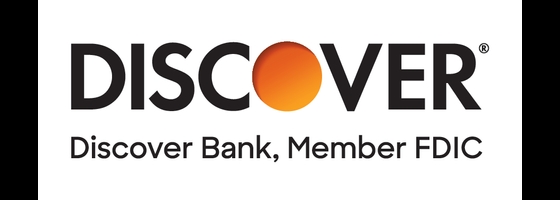A line of credit is a form of revolving credit. You have an initial credit line, which you can borrow against. You only pay interest on the amount of your credit line that you use.
Getting one is something you might consider if you need to borrow money but aren't sure about the amount. You might also consider using a line of credit as a backup source of emergency funding in case an unplanned expense comes along.
It’s a flexible way to access cash for virtually any purpose, but is it a good way to borrow? Let’s take a closer look.
How does a line of credit work?
A line of credit works by giving you access to funds up to a certain amount. As you draw against your credit line, your available credit shrinks. When you make a payment, your available credit increases.
You may access your credit line using a debit card, paper checks, electronic transfers, or in-person withdrawals if you opened it at a traditional bank or credit union. You might pay the balance in full or over time. In either case you only pay interest on the portion of your credit line you've used.
For example, say you have a $10,000 line of credit. You use $6,000 of it during the draw period. When the repayment period begins, you'd only pay interest on the $6,000 you borrowed.
Line of credit: Pros and cons
A line of credit can allow flexible access to funding, but it's important to consider the advantages and disadvantages before getting one.
Pros:
- You only pay interest on the portion of your credit line you use.
- A line of credit may be helpful for covering large expenses or consolidating debt.
- It may be easier to be approved for a line of credit vs. other borrowing options.
Cons:
- Borrowers with poor credit may pay higher interest rates.
- There may be fees associated with a line of credit that can add to its overall cost.
- A line of credit may not help your credit scores if you abuse it.
Benefits of a line of credit
A line of credit may work better for some borrowers than others. Here are some of the benefits to weigh when considering a line of credit.
Pay interest only on what you use
When you take out a line of credit, you're not obligated to pay interest on the entire credit line. You'd only pay interest on the amount you use. You might appreciate this if you plan to use your credit line for a specific expense but aren't sure exactly how much you'll need to spend.
A line of credit may offer a fixed or variable interest rate. Fixed rates allow for predictability, as you can calculate how much you'll pay in interest. Variable rates can increase or decrease over time, which could mean paying more or less in interest overall.
Meet different needs
A line of credit is a flexible way to borrow, as you can use the money for just about anything. Some of the ways to use a line of credit include:
- Consolidating debts.
- Buying new furniture.
- Covering wedding expenses.
- Paying medical or vet bills.
You could also set up a line of credit as a "just in case" option for covering unplanned expenses if you don't have a fully funded emergency savings account.
Easier approval
Depending on your credit scores, it might be easier to be approved for a line of credit in place of a personal loan. The higher your credit score, the better the interest rate on a line of credit might be. This can add to your total savings if you're paying interest on balances at a low rate.
Considerations when taking a line of credit
As mentioned, a line of credit may not be right for everyone. Here are a few things to take note of if you're thinking of getting a line of credit.
Potentially expensive
If you have fair or poor credit, you're less likely to qualify for the lowest interest rates on a line of credit. This could make borrowing more expensive, especially if you plan on using a larger portion of your credit line.
Variable rates can also increase your cost of borrowing. With a variable rate the interest you pay is tied to a benchmark rate. If the benchmark rate rises, then your line of credit rate could rise as well.
There may be fees
Interest isn't the only cost you have to worry about when getting a line of credit. Lenders can also charge fees, including:
- Origination fees to underwrite the credit line.
- Late fees if you pay late or miss a payment.
- Monthly or annual service fees.
Even if the fees are relatively small, they still add to your total cost of borrowing.
Credit score impacts
Opening a line of credit can knock a few points off your credit score if the lender performs a hard credit check. Beyond that, however, a line of credit could affect your score in other ways.
Two of the most important factors in FICO credit scoring are your payment history (35%) and credit utilization (30%). The former considers whether you pay on time or late, while the latter looks at how much of your available credit you're using.
If you pay your line of credit late or miss payments altogether, it could cause significant damage to your scores. Similarly, running up a high balance relative to your credit limit could also harm your score.
Lines of Credit: Understanding the different types
There are different options for getting a line of credit. The one you choose may depend on your plans for the money.
Here's an overview of the types of lines of credit you might get.
- Personal line of credit. A personal line of credit is designed for your own use. It can be either secured, meaning you need collateral to qualify, or unsecured. You can find personal lines of credit offered at banks, credit unions, and online lenders.
- Home equity line of credit (HELOC). A HELOC is a line of credit that uses your home equity as collateral. Equity is the difference between what your home is worth and what you owe on the mortgage. You might take out a HELOC to consolidate debts or fund home repairs and renovations. (Interest on a HELOC used for home improvements to the home used as collateral can be tax deductible.)
- Business line of credit. A business line of credit is designed for business use. For example, you might get a business line of credit to purchase supplies or inventory for your business. These credit lines are usually unsecured but may require the borrower to personally guarantee repayment.
All three can charge interest and fees. The main difference, again, is their purpose.
When a line of credit is useful
A line of credit is typically best suited to situations in which you need to borrow money to cover expenses but aren't sure exactly how much you'll need.
For example, say that your daughter is getting married, and you want to help pay for the wedding. She and her soon-to-be spouse have a tentative budget but don't have a firm number in mind yet. You open up a line of credit to help cover things such as the wedding planner's fee, the reception hall deposit, and the caterer's deposit.
A line of credit can also be good to have when an unexpected expense comes along. For example, say that your HVAC system conks out in the middle of the summer. You don't have $6,000 in cash to replace it, but you do have an open line of credit that you could use to meet the expense.
When not to use a line of credit
As a general rule it doesn't make sense to use a line of credit to pay for things you could cover with cash. Unless your credit line has a 0% annual percentage rate (APR), which is unlikely, you'd just be costing yourself money in interest.
It may not be a good idea to use a line of credit for unnecessary purchases either. Sure, it would be nice to take a vacation to somewhere you’ve always wanted to visit, but you have to consider what the trip is going to cost you in interest and fees if you're using a line of credit to pay for it.
Lastly, a line of credit may not work well for people who are not careful about budgeting or tracking expenses. You could end up with a lot of debt to repay. Should you pay late— or, worse, default on the debt—it could wreck your credit scores.
Alternatives to a line of credit for borrowing money
A line of credit is just one way to tap into cash when you need it. There are a few other options you might consider when you need to borrow.
Personal loans
A personal loan allows you to borrow a lump sum of money that you repay over time with interest. You might choose a personal loan if you have a set idea of how much you need to borrow. If you're interested in getting a personal loan, you can start your search online. There are numerous lenders that offer unsecured personal loans to qualified borrowers.
Upgrade, for example, allows you to borrow up to $50,000 and offers low, fixed interest rates. There are no prepayment penalties for paying the loan off early. You can use funding to consolidate debts, fund home repairs, or cover other expenses.
Upgrade
Loan amount
$1,000 to $50,000
What if you have bad credit? You could still qualify for a personal loan, though you might pay more in interest. OneMain Financial, for example, offers personal loans ranging from $1,500 to $20,000 to borrowers with less-than-perfect credit. You can take anywhere from 24 to 60 months to repay your loan. The only caveat is that these loans cannot be used to cover higher-education expenses.
OneMain Financial Bad Credit Loan
Loan amount
$1,500 - $20,000
Min. credit score
Not disclosed
Credit cards
Credit cards are also a type of revolving credit. When you open a credit card account, you're assigned a credit limit that you can spend against. Your available credit increases or decreases based on your spending and payment activity.
There are lots of credit card options to choose from, including cash back cards, rewards credit cards, travel credit cards, and balance transfer cards. You can start with what your current bank offers, then expand your search to include other banks.
Credit unions are also worth a look when you're on the hunt for a new card. PenFed Credit Union, for example, offers personal loans, but it also has several credit card options from which to choose.
One is the PenFed Gold Visa, which offers a 0% introductory APR on purchases and balance transfers for the first 15 months after opening the account. This is great if you want to make a planned purchase or consolidate other credit card debts. You can compare options online and get matched with cards without impacting your credit scores.
Home equity loans
As mentioned, you could get a HELOC if you own a home, but you might consider a home equity loan instead of a HELOC.
With a home equity loan, you're still borrowing against your equity. The difference is that you're getting a lump sum of money instead of a revolving credit line. Home equity loans may be more attractive if you're interested in locking in a low, fixed interest rate on what you borrow.
Why a good credit score is important to get a line of credit
A good credit score matters when applying for a line of credit for two reasons. First, a higher credit score could make it easier to get approved. Lenders consider your credit history and scores, as well as your income, when determining whether to approve you or not. A stronger credit score can make you appear less risky in lenders' eyes. Second, a good credit score can help you secure lower interest rates and more favorable terms on a line of credit. The lower your rate, the less you'll pay in interest.
Types of repayment for a personal line of credit
Every personal line of credit is different with regard to the payment terms. You may have anywhere from one to five years to repay your line of credit or even longer, depending on the lender.
Your line of credit may have an initial draw period in which you can use your credit line. There may be no payment due, or you might be expected to make minimum or interest-only payments. In some cases, you may be expected to "clear" the balance annually.
Once the draw period ends, the regular repayment period begins. At this point you'll make payments according to the schedule set by the lender. Your line of credit will be closed, so you won't be able to borrow against it. But again, you're only paying interest on the amount of your credit line you used at this point.
How to find the best personal line of credit
Finding the best personal line of credit for you starts with knowing how much you'd like to borrow and the kind of rates for which you might qualify based on your credit history. Once you know these things, you can search online to compare different personal line of credit options.
It's helpful to know what to look for in order to find the right line of credit. Some of the most important things to consider include:
- Minimum and maximum borrowing amounts.
- Interest rates and whether they're fixed or variable.
- Any fees you might pay.
- Repayment terms.
- Minimum credit score and income requirements to qualify.
It's a good idea to get multiple rate quotes before making a decision. Just be sure to consider whether a lender allows you to check your rates without impacting your credit scores.
Also, it's important to know whether you're getting a personal loan or a line of credit. Discover, for example, offers both personal loans and home equity loans.. You can check your rates for either one without hurting your credit score. However, Discover doesn't offer a HELOC at this time. If you're not sure of the differences between borrowing options, you might end up with the wrong type of loan.
Discover® Bank
Loan amount
$2,500 to $40,000
Where to get a personal line of credit
You can find personal lines of credit at traditional banks and credit unions, as well as online lenders. Whether one is better than the other depends largely on your preferences.
For example, it might make sense to get a line of credit through your bank if you're able to qualify for a relationship rate discount or fee waivers. Or you might prefer having a line of credit at a brick-and-mortar bank or credit union if you'd like to be able to visit a branch if needed.
Online lenders have their advantages, however, when it comes to interest rates, fees, and approval requirements. You may find lower rates for a line of credit offered at an online lender, and there may be fewer fees as well. Online lenders can also offer lines of credit to people with less-than-perfect credit, who might find themselves being denied at a traditional bank.
If you're not sure where to find lines of credit online, you could use an online lending marketplace to start your search. Happy Money, for instance, helps to connect borrowers with lending partners. You can check your rates without affecting your credit scores, and it's up to you to decide if you want to follow up on a loan offer.
TIME Stamp: A line of credit is a flexible way to borrow
A line of credit can make it easier to pay for things when you have an uncertain budget or need cash for emergency situations. If you're thinking of getting a line of credit, it helps to know how it works and where you can find one. In the meantime you can work on improving your credit score, so you have the best odds of being approved.
Frequently asked questions (FAQs)
How to apply for a line of credit?
If you'd like to apply for a line of credit, you'll need to fill out an application. You might be able to do that online or in person, depending on the lender. You'll need to state how much you'd like to borrow and what you plan to use the money for. You may also be asked to submit supporting documentation, such as a copy of your pay stubs or bank statements.
Does a line of credit impact my credit score?
A line of credit can impact your credit score in a couple of ways. First, your payment history can affect your scores. On-time payments can help your credit while late or missed payments can hurt it. Your credit utilization—how much of your credit line you're using—also matters. Maintaining a lower credit utilization is usually better for your credit score.
What is a line of credit for a business?
A business line of credit is a line of credit that's designed for business use. It works similar to a personal line of credit but is intended to be used to cover expenses that a business might have. This could include things such as renovating your business premises, buying new equipment, purchasing inventory, or paying for supplies.








